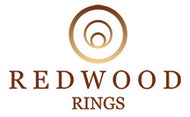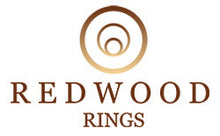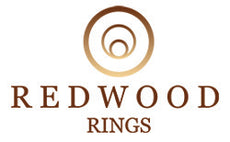What is the History of Engagement Rings?

The history of engagement rings is a captivating journey that spans several millennia and cultures, reflecting evolving societal norms, economic conditions, and personal expressions of love. Originating from Ancient Egypt, where circles symbolized eternity, the tradition has transformed over centuries. From the iron betrothal rings of Ancient Rome to the diamond-studded bands popularized by De Beers in the 20th century, each era has left its indelible mark on this enduring symbol of commitment.
Today, engagement rings are more than just a promise of marriage. They are a testament to individual style, with trends ranging from colored gemstones to custom-designed pieces.
Table of content
Ancient Beginnings
From the iron bands of ancient Rome symbolizing engagement and the transfer of ownership to the Egyptian reverence for the eternal circle as a representation of undying love, these early societies embedded rich symbolism into these precious tokens of commitment.
Roman Roots: Betrothal and Ownership
In ancient Rome, iron rings signified the initial stages of engagement, as tangible symbols of a betrothal agreement and a forthcoming marriage. These iron bands were not just simple ornaments but also signifiers of the transfer of ownership, reflecting the prevailing societal norms where women moved from the protection of their fathers to that of their husbands.
As Roman society evolved, gold rings began to emerge among the wealthier classes, serving as indicators of the affluence and social standing of the families involved in the union. This shift from iron to gold marked a significant transition in the cultural and material value attributed to engagement rings.
Did you know?
The Romans initiated the tradition of engraving engagement rings. A 'fede' ring in the British Museum bears the inscription 'Te amo parum', meaning 'I do not love you enough'.

Egyptian Influence: The Circle of Eternity
Parallel to Roman developments, ancient Egyptian culture played a pivotal role in shaping the symbolic essence of the ring. Egyptians valued the circle as a potent symbol, representing eternal life and love without beginning or end. They adopted the circular band as a physical manifestation of these beliefs, embedding deep symbolic interpretations into the very form of the ring.
This perspective on the circular shape profoundly influenced the evolution of the engagement ring, imbuing it with a sense of timelessness and continuity that resonated through subsequent cultures and ages, laying the groundwork for its enduring significance in matrimonial traditions.
Medieval Milestones
From the medieval Church's rule, transforming the ring into an official declaration of intent to marry, to Archduke Maximilian's introduction of the first diamond ring in 1477, each milestone marked a profound shift. The Church's influence aligned rings with deeper virtues, while diamonds added rarity, birthing a tradition that transcended cultures, becoming the global symbol of love and fidelity.
The Church's Influence and the Officialization of Engagement Rings
During the medieval period, the engagement ring underwent a significant transformation, primarily influenced by the Christian Church. In the 9th century, Pope Nicholas I made a landmark decree that required a ring as a formal declaration of intent to marry, effectively Christianizing the engagement ritual.
This decree reinforced the cultural importance of engagement rings and aligned them with Christian virtues and commitments, embedding deeper meaning and significance into the practice. The Church's involvement marked a pivotal moment in the officialization and standardization of engagement rings, transitioning them from varied cultural tokens to a more universally recognized symbol of matrimony and fidelity.
The First Diamond Engagement Ring
The late medieval period witnessed another monumental milestone with the introduction of the first recorded diamond engagement ring. In 1477, Archduke Maximilian of Austria presented a diamond ring to Mary of Burgundy to symbolize his intent to marry. This act set a significant precedent, elevating the status of the engagement ring from a mere formal agreement to a token of personal and profound commitment.
The use of diamonds, rare and revered, introduced an element of luxury and exclusivity to engagement rings, setting the stage for future trends and preferences. This moment marked the beginning of the diamond ring's association with romance and marriage, a tradition that would grow and evolve into the global phenomenon it is today.
Renaissance to Enlightenment: Expanding Symbolism and Artistry
Discover how these tokens of love evolved from simple bands to intricate designs, reflecting societal changes and personal expressions of commitment.
Gimmel Rings and Unity
The gimmel ring exemplifies the Renaissance era's fascination with intricate designs and meaningful symbolism. Notable figures of the time, such as the English poet and courtier Sir Philip Sidney, are known to have exchanged these rings. Sidney's engagement to Penelope Devereux was marked with a gimmel ring, symbolizing their union in a highly public and celebrated affair.
The design, featuring intertwined bands, became a physical representation of their promised unity. Historical records from the period also note that during weddings, the joining of the bands was often accompanied by elaborate ceremonies, reflecting the societal importance of marriages as alliances between families and their assets.

Did you know?
The fede design, characterized by two hands clasping at the bezel, symbolizes the act of a couple joining hands during a wedding ceremony, a tradition that has its origins in ancient Rome.
Poesy Rings and Romantic Inscriptions
The trend of poesy rings reached its height during the Renaissance, with several historical accounts highlighting their use among the European nobility. A famous example involves the notorious King Henry VIII of England, who reportedly presented Anne Boleyn with a poesy ring inscribed with a romantic verse.
This ring symbolizes a promise of marriage and a testament to their controversial and politically charged romance. The personalization of these rings provided an intimate connection between the giver and the recipient, making the engagement a deeply personal affair. The practice of inscribing romantic poetry onto rings became so widespread that it wasn't limited to the elite; it permeated through various social strata, reflecting a broader cultural shift towards romantic individualism and personal expression.
The Diamond Revolution
The Diamond Revolution marks a pivotal moment in history that transformed the perception and availability of diamonds worldwide. This era, predominantly sparked by strategic marketing campaigns in the mid-20th century, redefined diamonds from rare gems to symbols of love, status, and eternal commitment, fundamentally shaping modern culture and the global diamond industry.
The Rise of Diamonds: From Rarity to Symbol of Forever
The late 19th century marked a dramatic shift in the engagement ring tradition with the discovery of extensive diamond mines in South Africa. Prior to this, diamonds were an exceedingly rare commodity, but the sudden influx from these mines transformed them from a rarity to a more accessible symbol of wealth and commitment.
The 1870s saw a surge in diamond availability, which coincided with improved cutting and polishing techniques, making diamonds not just more available, but also more brilliant and desirable. This transition was not immediate, but by the turn of the 20th century, diamonds had begun to emerge as the preferred choice for engagement rings, signifying not just an eternal bond but also reflecting the industrial and economic growth of the era.
De Beers and the "A Diamond is Forever" Campaign
The mid-20th century witnessed a pivotal moment in the history of engagement rings with the introduction of De Beers' "A Diamond is Forever" advertising campaign. Launched in 1947, this slogan effectively solidified the diamond's status as the ultimate symbol of everlasting love and commitment.
The campaign was profoundly influential, not just in boosting diamond sales but in shaping cultural perceptions and expectations around engagement. It linked the durability and timelessness of diamonds to the concept of a forever bond in marriage, making the diamond engagement ring a must-have in proposals. This marketing strategy was so successful that it not only catapulted diamond rings to prominence in the United States but also across the globe, fundamentally altering the engagement ring tradition into what it is recognized as today.

Global Traditions and Cultural Variations
Across the globe, engagement rings reflect the rich diversity of cultural interpretations and traditions, with variations such as the right-hand rings in India and Chile, simple gold bands in Scandinavia, and intricately wrapped gifts in Japan, highlighting the unique ways different societies integrate these symbols into their customs.
Simultaneously, these traditions are evolving with broader societal shifts towards gender equality and individual expression, leading to the emergence of trends like men wearing engagement rings and a demand for unique, ethically sourced designs.
This global mosaic of engagement ring customs not only underscores the cultural richness associated with these symbols of commitment but also mirrors the changing societal norms and values, illustrating a dynamic interplay between tradition and modernity.
Conclusion
The history of engagement rings is a rich and multifaceted narrative that spans thousands of years and encompasses a myriad of cultures and traditions. From the ancient Roman iron bands symbolizing ownership to the elaborate gimmel and poesy rings of the Renaissance, and finally to the diamond-studded declarations of love popularized in the modern era, engagement rings have continually evolved to reflect the values, economic conditions, and aesthetic preferences of their times.
The profound influence of campaigns like De Beers' "A Diamond is Forever" has cemented the diamond's position as a symbol of eternal love, while global variations and modern trends towards personalization and ethical sourcing demonstrate the ongoing evolution of this enduring symbol.
As societies continue to change, so too will the traditions surrounding engagement rings, yet their fundamental purpose as symbols of love, commitment, and union is likely to remain a constant, cherished thread in the fabric of human culture.





